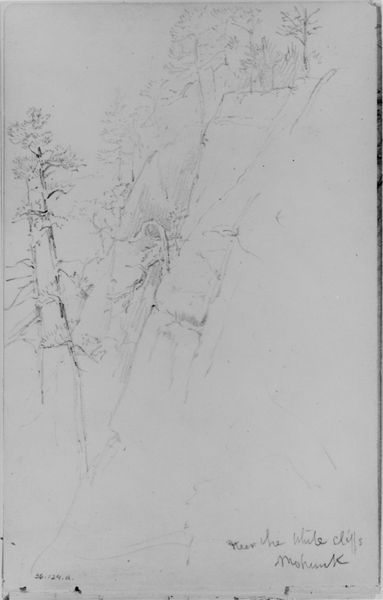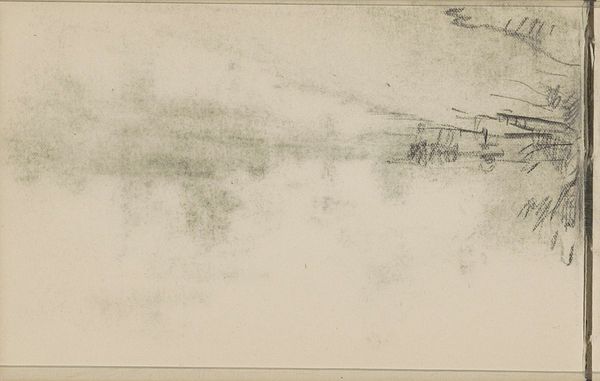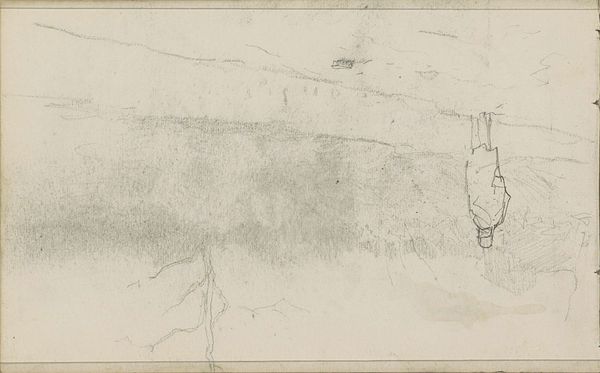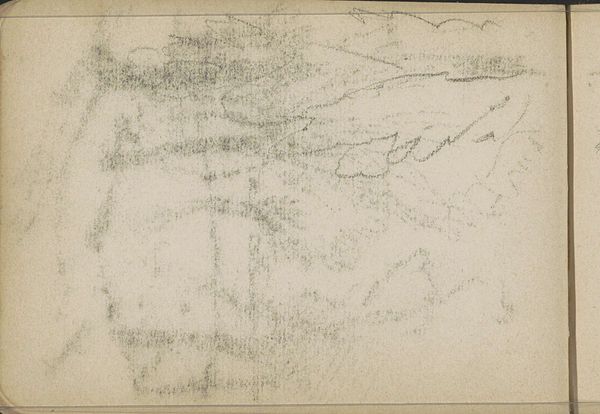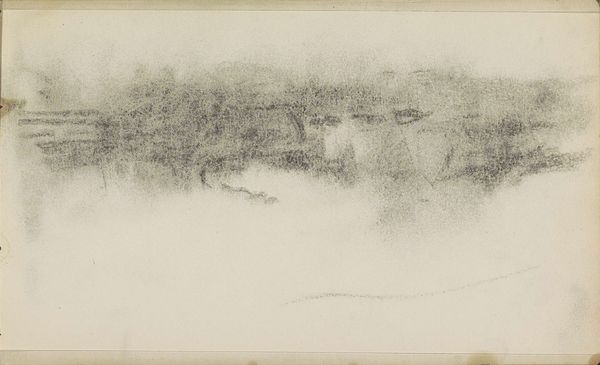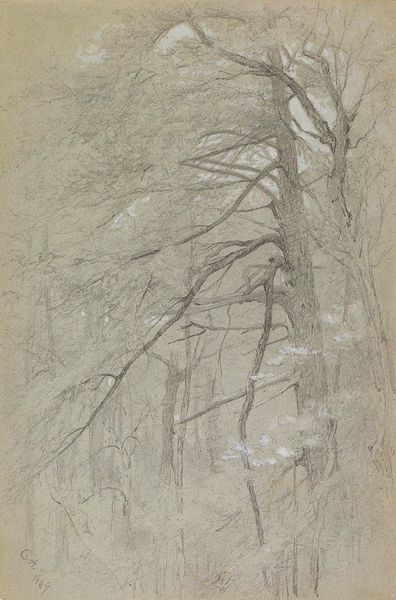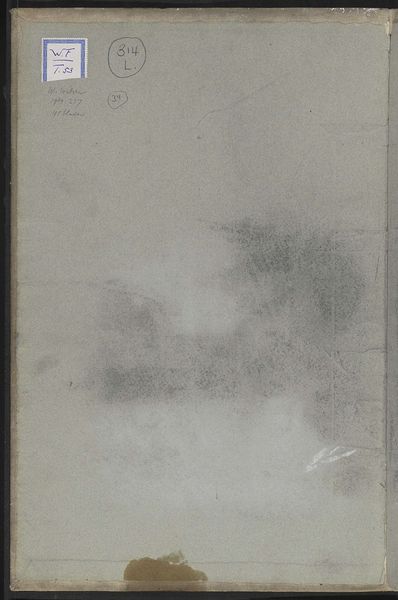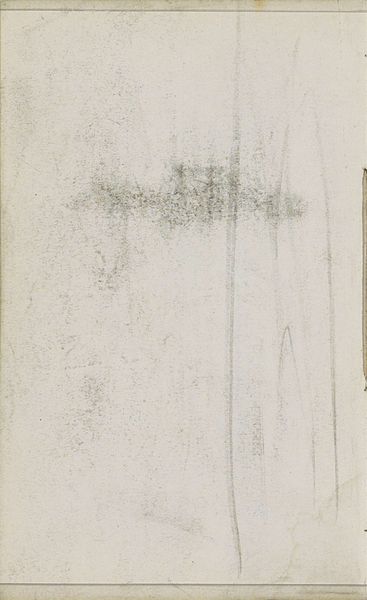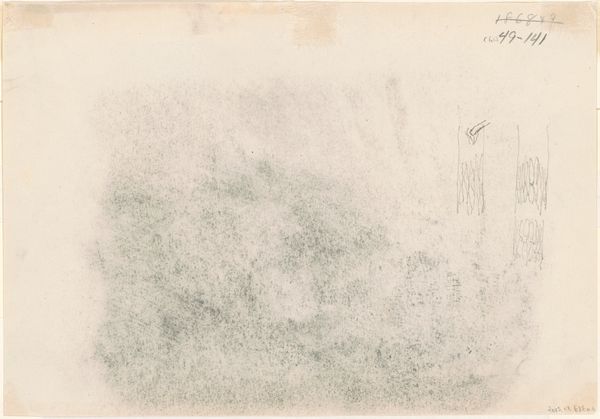
Copyright: Rijks Museum: Open Domain
Editor: So this work, "Abklatsch van de krijttekening op blad 3 recto," a pencil drawing on paper by Isaac Israels, dated somewhere between 1875 and 1934, strikes me as incredibly faint, almost ghostly. It feels like a landscape, but the details are so vague. What do you see in this piece? Curator: The lack of definite lines contributes to that spectral quality, doesn't it? The "Abklatsch" or rubbing technique itself implies a secondary image, a copy of something that was. Think about the layers of meaning already embedded: the artist's hand, the original sketch, then the transfer. This becomes an echo, a memory of an image. Do you get a sense of the passage of time? Editor: I do, now that you mention the "echo." Is that common for the Impressionist landscape style? Curator: Impressionism, at its core, is about capturing a fleeting moment. But what Israels has done here is transform that fleeting moment into a haunting memory. The landscape almost fades, like a dream dissipating upon waking. The symbolism, I would argue, goes beyond mere representation. It asks us to consider what remains when things fade: emotional residue, traces of what once was. Editor: So, it's less about the literal landscape and more about the feeling it evokes? Curator: Precisely! The vagueness, the incompleteness – these become powerful tools. It is like the cultural memory we keep within ourselves. We recall what's important. What are your thoughts on how art can capture intangible human experiences? Editor: That's fascinating; I'd never considered the "echo" aspect of a rubbing before. Thanks! Curator: My pleasure! Seeing the ghost of an image helps you to see art more deeply.
Comments
No comments
Be the first to comment and join the conversation on the ultimate creative platform.


